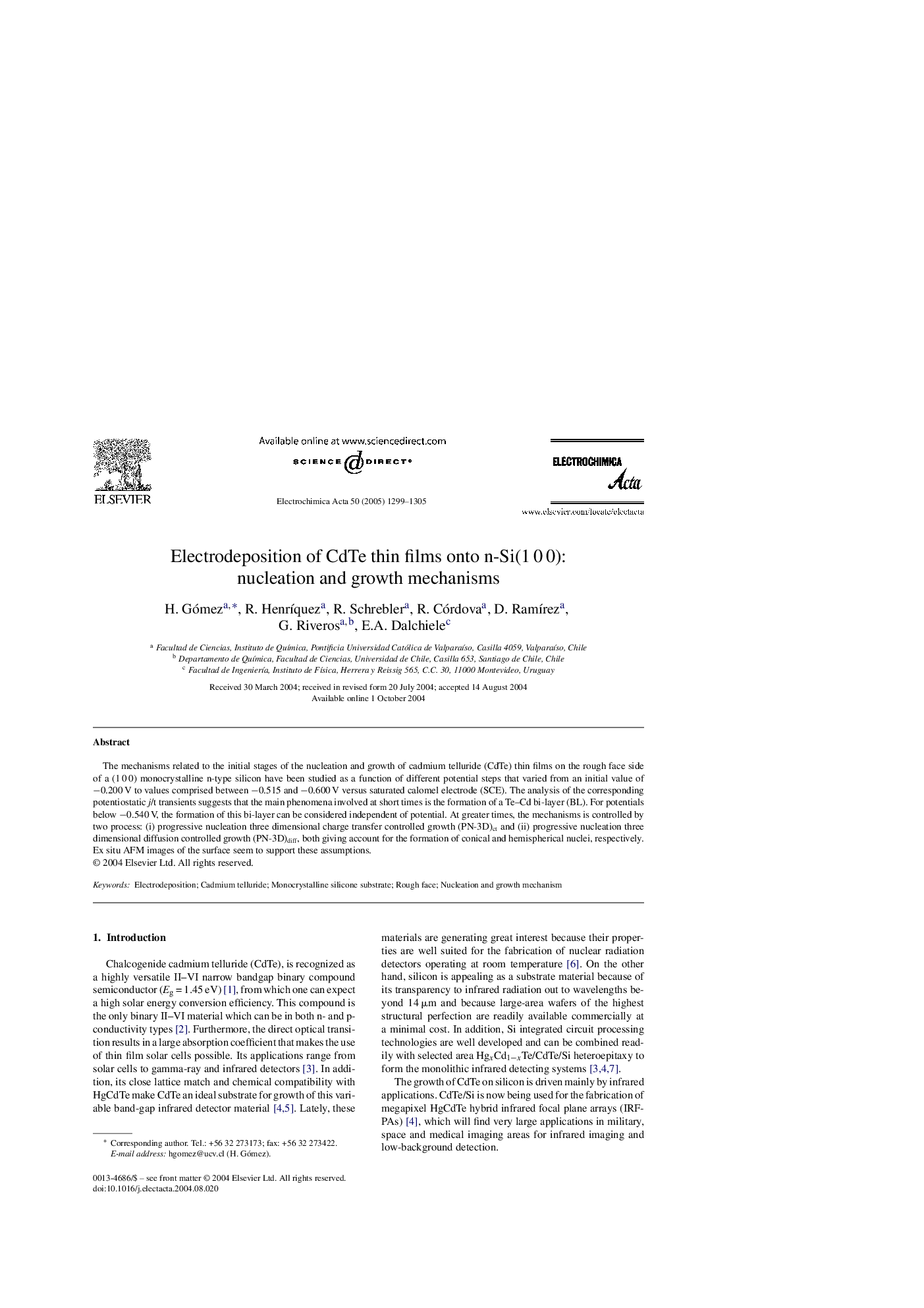| Article ID | Journal | Published Year | Pages | File Type |
|---|---|---|---|---|
| 10269767 | Electrochimica Acta | 2005 | 7 Pages |
Abstract
The mechanisms related to the initial stages of the nucleation and growth of cadmium telluride (CdTe) thin films on the rough face side of a (1Â 0Â 0) monocrystalline n-type silicon have been studied as a function of different potential steps that varied from an initial value of â0.200Â V to values comprised between â0.515 and â0.600Â V versus saturated calomel electrode (SCE). The analysis of the corresponding potentiostatic j/t transients suggests that the main phenomena involved at short times is the formation of a Te-Cd bi-layer (BL). For potentials below â0.540Â V, the formation of this bi-layer can be considered independent of potential. At greater times, the mechanisms is controlled by two process: (i) progressive nucleation three dimensional charge transfer controlled growth (PN-3D)ct and (ii) progressive nucleation three dimensional diffusion controlled growth (PN-3D)diff, both giving account for the formation of conical and hemispherical nuclei, respectively. Ex situ AFM images of the surface seem to support these assumptions.
Related Topics
Physical Sciences and Engineering
Chemical Engineering
Chemical Engineering (General)
Authors
H. Gómez, R. HenrÃquez, R. Schrebler, R. Córdova, D. RamÃrez, G. Riveros, E.A. Dalchiele,
